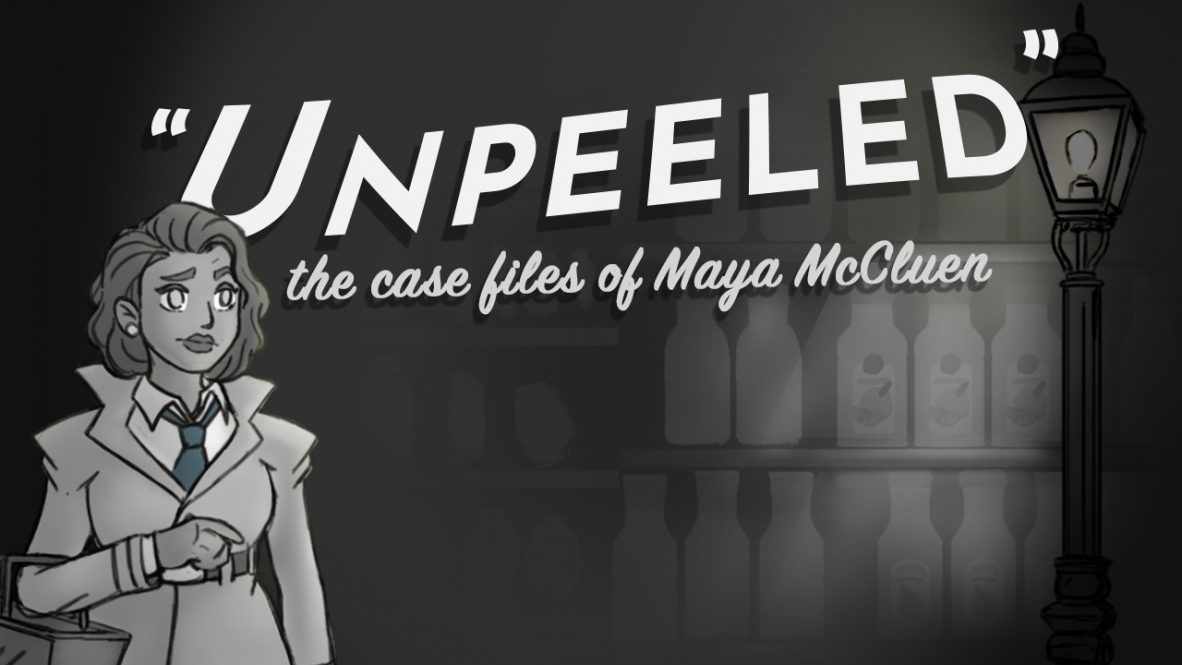If you have ever found yourself in a grocery store scouring the labels trying to make the best choice but were instead left feeling like a deer in the headlights and unsure of what terms like “natural”, “organic”, or “non-GMO” ingredients mean, you are not alone.
A team of researchers and Extension educators from the UConn’s College of Agriculture, Health, and Natural Resources GMO working group, including Extension Program Specialist Stacey Stearns, teamed up with the New Mexico State University Learning Games Lab to create an interactive activity called Unpeeled: The Case Files of Maya McCluen to help answer some of these questions.
“Unpeeled” is part of a project called “Navigating the Grocery Store Aisle: Understanding Food Marketing Labels,” made possible by a grant from New Technologies in Agricultural Extension (NTAE) program and the Extension Foundation. Stearns has documented the collaborative journey of the game’s creation on the Connect Extension blog of the Extension Foundation.
Stearns explains the UConn GMO working group started a few years ago when she and other researchers and extension educators from around UConn realized there was a need collaborate and organize. The group coalesced and began working on projects focused on educating consumers about GMOs, like Unpeeled, says Stearns.
“I’ve been talking about food marketing labels for a while and just how prevalent the ‘non-GMO’ food label is and how confused people are about it.”
The team used data from consumer surveys to target key areas that respondents identified as being unclear, and those are the areas the game aims to address.
“Unpeeled” begins in a grocery store, where detective Maya McCluen meets a perplexed shopper named Mark, who is trying to decide which orange juice to buy, but he can’t easily make comparisons because he does not know what the “non-GMO” label means. Players progress through a series of activities as Maya digs into the case, from defining the labels, to showing that there are only 10 GMO crops on the U.S. market currently, players rack up the facts as clues.
Stearns explains that much of the label confusion stems from the fact that the regulation is puzzling or essentially non-existent.
“There’s not a lot of regulation and this is where it gets complicated. The organic label is regulated by USDA,” says Stearns. “Organic is non-GMO. Non-GMO is certified by the Non GMO-Project where companies pay to become certified but anybody can pay to have their product certified. It’s become more of a marketing thing. The ‘natural’ label is basically a free for all because it applies to how the food is processed and the USDA and FDA each have their own definitions. When you see the ‘natural’ label, it basically means nothing.”
Along with the lack of clarity, confusion, and sometimes contradictory nature of labels, the topic of shame also came up. Stearns says that is one focus she feels especially strong about addressing:
“People are trying so hard to be good parents and do the right thing and then you get the shaming, and that comes with ‘Oh my gosh, you didn’t buy your kids the non-GMO?. What kind of a bad parent are you?’ Well, actually you’re doing okay.”
The labels can bring up some contentious topics, but Stearns points out that the group’s aim in creating the game is not to sway consumers in any way, but rather to instill knowledge.
“Interestingly enough, our working group is not aligned as ‘pro-GMO.’ We are all ‘pro-science’ and we are ‘pro-people-making-informed-decisions.'”
Including “non-GMO,” “natural,” and “organic” the team found 19 common, confusing food labels but they decided to focus on these three for this first installment of “Case Files,” with hopes of securing funding for further installments that will explore other confounding food labels.
Based on the number of labels adorning packages at the store, one may assume that most products are potentially filled with GMOs or that certain foods are safer or healthier because they are labeled “natural” or “organic.” As one of the least understood labels, “GMO-free” can be found on many products including Stearns’s favorite example, Himalayan pink salt.
“Salt does not have DNA, so of course it’s ‘GMO-free’,” adds Stearns.
Play the game and take the survey at https://unpeeled.nmsu.edu/.
The team that made the game possible includes UConn Extension Educators and researchers (in alphabetical order): Joseph Bonelli, Cristina Connolly, Jen Cushman, Sharon Gray, Michael Puglisi, Robert Ricard, Stacey Stearns, and Xiuchun (Cindy) Tian.



